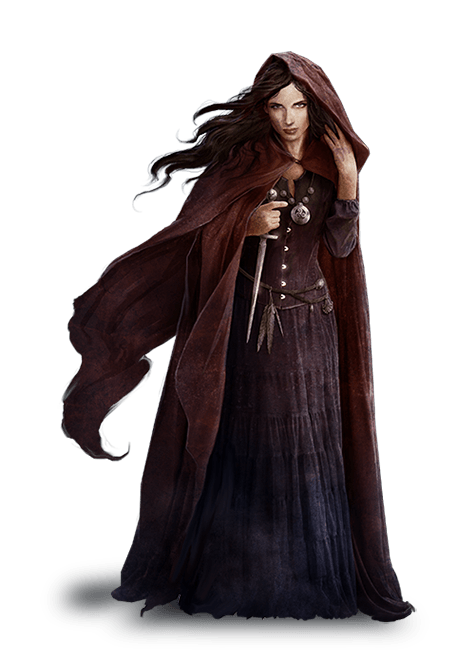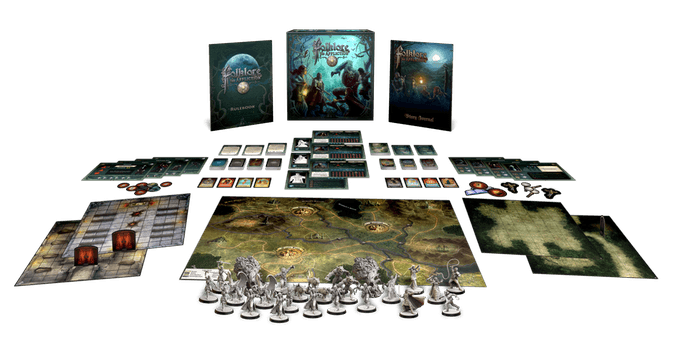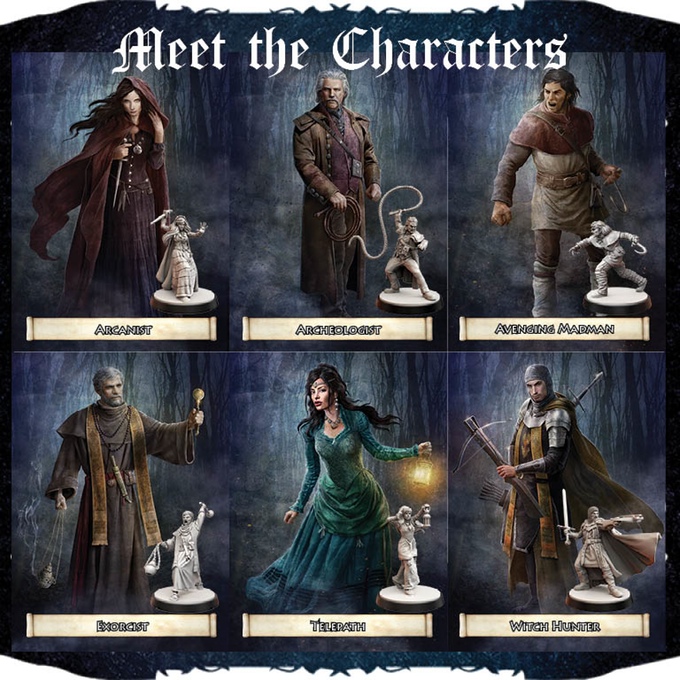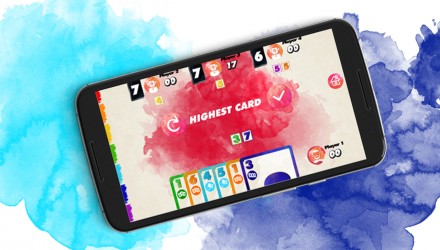I n a land plagued by darkness and mysticism, someone must stand up for the weak and the innocent. You, dear traveler, must be that defender. But be mindful, the rumors, the whispers, the stories passed down between generations are not just tall-tales and legends. In this world, folklore will keep you alive. Vampires and werewolves, demons and witches, these terrors are real and they stand along your path.
Folklore: The Affliction is the latest offering from Greenbrier Games, publishers of previous successes Zpocalypse, Heavy Steam and Yashima: Legends of the Kami Masters. Adding to their line of uniquely thematic games, Folklore: The Affliction is an ambitious adventure-style game set in a dark fantasy world of horrifying creatures and dangerous landscapes.
Steve and I had the opportunity to sit down with Will Donovan on Roll20, an interactive online game tool, and give the first adventure line a go. Even with just this short exposure to the system, I can safely say that Folklore offers something special to the genre of narrative adventure games.
A Dark Fantasy Adventure
 The best way to describe Folklore: The Affliction is as a meld between modern dungeon-crawling board games, like Descent,and classic Dungeons & Dragons role playing adventures. It is honestly most comparable to Dungeons & Dragons 4th Edition, which heavily blended miniatures based board combat with narrative story telling and character advancement. Where Folklore deviates is in its execution, as it is completely cooperative – no Game Master required. You will work solely with your companions to navigate an open world; one designed for linear plot advancement or free exploring – whichever you’d like.
The best way to describe Folklore: The Affliction is as a meld between modern dungeon-crawling board games, like Descent,and classic Dungeons & Dragons role playing adventures. It is honestly most comparable to Dungeons & Dragons 4th Edition, which heavily blended miniatures based board combat with narrative story telling and character advancement. Where Folklore deviates is in its execution, as it is completely cooperative – no Game Master required. You will work solely with your companions to navigate an open world; one designed for linear plot advancement or free exploring – whichever you’d like.
Along your travels you’ll encounter smaller obstacles whose resolution can tilt the future story-line one way or another, like a choice to either help someone and gain a bonus at a future plot point (unknown to the players at the time of deciding) or move along and focus on your own goals. You’ll also be faced with more open-ended options that can radically change the outcome of your adventure’s main arc.
Choose Wisely or Fall Prey to the Darkness
While the goal of the game is to advance the story, the choices you make along the way will also advance your personal character, chosen from six diverse options. Will you be the Madman, like Steve, who has a propensity for revenge and bloodlust, or will you be the Exorcist, like I was, who seeks to cleanse the world of its evils? If neither of those sound interesting, there are four additional characters available in the base game which offer their own unique abilities and characteristics.
This diversity allows you to make the character your own, much more so than many other adventure-style board games available in today’s market. You’ll increase your ability statistics, optimize your equipment, and even interject your own personality into the character, as you interact with NPCs and make decisions within the world around you.
As we played through the scenario, we allocated loot drops to those who would benefit most and really sought to help each other become better at our individual foci. We even discussed how our characters would respond to certain situations and chose specific players to make skill checks and confront challenges presented. Steve, with a singular focus and driven by grief, didn’t hesitate to push others out of his way if he thought it would help on his path to avenge his family’s death. I, on the other hand, chose to embrace a more passive approach, trying to work with those we encountered and only lashed out when I felt wronged.
In this way, Folklore really provides the opportunity to become your character and take control of their actions.
Come Prepared to Fight the Beasts
The biggest thing to recognize before diving into Folklore is just how you’ll be accomplishing tasks and progressing through the game. Much like many RPGs, Folklore relies heavily on dice-rolling ability checks to determine the presence and degree of success for any given challenge. Whether talking to townsfolk or lopping off a lycanthrope’s limbs, you’ll be grabbing some dice and rolling for a target number. This may not appeal to everyone but, frankly, this game really isn’t for you if you’re not interested in polyhedrons.
The nice thing about the system present in Folklore is that many of the things you face will succeed or fail to a degree based on your roll. You’ll often get to engage with the world even if you’re not the luckiest roller at the table. It removes a lot of the boredom found in single-action RPGs, where a bad roll means waiting for the rest of the table to resolve their actions before trying the same roll again. It also helps to individualize the play experience; that angry mob that ran away before the fight began on your last play may end up a deadly force this time. This is all dictated by the combination of your story-telling choices and the fall of the dice.
Coupled with the dice rolling is the miniatures-based combat. This introduces a strong tactical element to balance out the narrative and allows a player to dig into something more tactile. While the basic combat isn’t necessarily the most innovative, Folklore introduces one of the best additions to this genre in a long time: playing after death. We had the opportunity to test out the death system first hand, which allows players to continue contributing to the game as a ghost once your health has dropped to zero. Each ghost has their own statistics and powers that make them just as dangerous as when corporeal. In our final battle, against some werewolf-summoning Moon Priests, Steve and Will used their ghost abilities to sap life from enemies, deal some devastating blows, and all but sacrifice their afterlife to bring down the boss monster in the final seconds.
 A Horror Worth Facing?
A Horror Worth Facing?
With only one short play under our belts, it wouldn’t be fair to speak to the full scope of Folklore: The Affliction. What my time with the game did reveal, however, is that Greenbrier Games has brought together a lauded team to develop an extremely ambitious project. Part boardgame, part role-playing, I found the world and game play of Folklore to be extremely enjoyable. Steve and I spent just a small amount of time being prepped on the mechanisms and instead jumped straight into the world. In no time, we were inciting bar fights with locals, going out of our way to take care of a pesky wolf problem, and – for Steve at least – repeatedly dismembering enemies and beating yet other enemies over the head with the body parts. These moments remain memorable even weeks later and I anticipate the full game will supply many more across plays.
While the price of the project is a consideration, you would easily spend an equal amount of money to get a game group into a new RPG system. From that perspective, Folklore seems to pack a lot of value, as the fully cooperative system lowers the barrier to entry and offers a unique mix of open-world story-telling and miniatures based combat. I’m looking forward to exploring Folklore: The Affliction’s dark world of twisted beasts and evil dealings further and hope to see it succeed.
First Impression
Steve
I was offered a chance to join Will and Matt to demo Folklore on Roll20. I had never heard of the game and went in with almost no knowledge of what the game was. I am always willing to try something new, so I volunteered. The game was an absolute blast to play. I can only imagine it being even better with the minis and the finished artwork sitting in front of you. Folklore offers a much more streamlined storytelling experience that helps players quickly get into the action.
The character selection is very well rounded and it was initially tough for me to decide who I wanted to be. I settled on the Madman and I am glad I made the choice. We played the tutorial campaign to get the feel of how skill checks and combat worked. Even the tutorial story was really fun and felt so epic. Pulling off the special skill the Madman posses, ripping off limbs and smashing the mobs in the face with it, felt very rewarding and satisfying. You really feel drawn into the role of your chosen character.
One of the coolest things about this game is that dying is not the end. Your character sheet flips over to a whole different set of skills that you can use as a spirit. This allows you to still be a part of the battles and can also be used as a strategic element depending on how the battle is going. We made it to the final boss area and two of us were in the spirit world battling the shape-shifting lycan to rescue the hostage we were out to seek. We were able to succeed in what would have been our last roll. The sense of accomplishment and victory was extremely satisfying.
I have some limited experience with playing DnD in the past. While DnD was fun, it seemed to be more work for the GM and the other players to commit the time to get together and play. Folklore really accomplishes the same feel as a DnD campaign but without huge time commitment and “complicated” skill checks. Most of the time-consuming legwork is done for you. Just pick your character and go!









